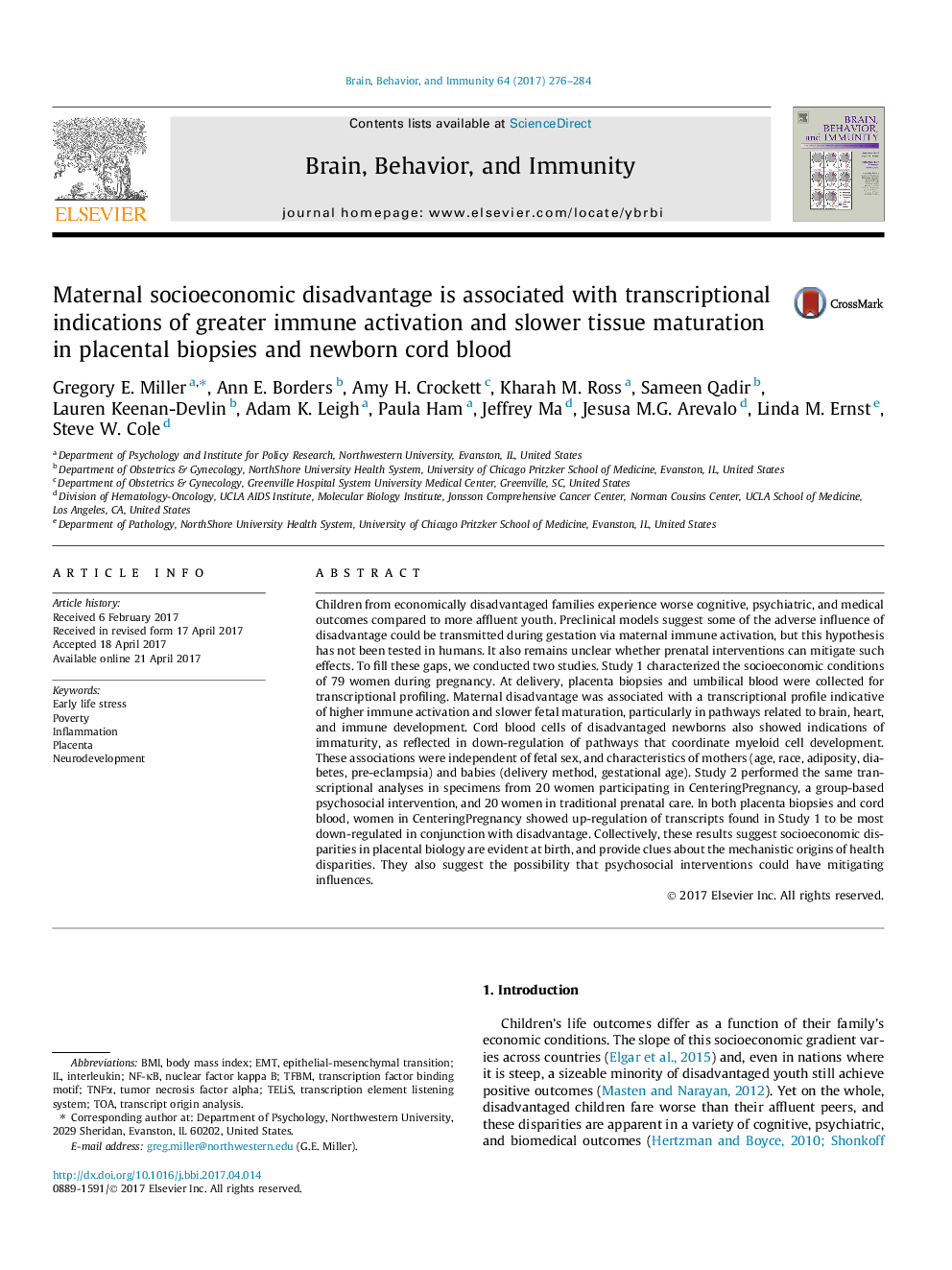| کد مقاله | کد نشریه | سال انتشار | مقاله انگلیسی | نسخه تمام متن |
|---|---|---|---|---|
| 5040641 | 1473903 | 2017 | 9 صفحه PDF | دانلود رایگان |
- Pregnant women's placental gene expression differed by socioeconomic status (SES).
- Profiles of lower SES women suggested immune activation and tissue immaturity.
- Cord blood cells of low SES newborns also showed indications of immaturity.
Children from economically disadvantaged families experience worse cognitive, psychiatric, and medical outcomes compared to more affluent youth. Preclinical models suggest some of the adverse influence of disadvantage could be transmitted during gestation via maternal immune activation, but this hypothesis has not been tested in humans. It also remains unclear whether prenatal interventions can mitigate such effects. To fill these gaps, we conducted two studies. Study 1 characterized the socioeconomic conditions of 79 women during pregnancy. At delivery, placenta biopsies and umbilical blood were collected for transcriptional profiling. Maternal disadvantage was associated with a transcriptional profile indicative of higher immune activation and slower fetal maturation, particularly in pathways related to brain, heart, and immune development. Cord blood cells of disadvantaged newborns also showed indications of immaturity, as reflected in down-regulation of pathways that coordinate myeloid cell development. These associations were independent of fetal sex, and characteristics of mothers (age, race, adiposity, diabetes, pre-eclampsia) and babies (delivery method, gestational age). Study 2 performed the same transcriptional analyses in specimens from 20 women participating in CenteringPregnancy, a group-based psychosocial intervention, and 20 women in traditional prenatal care. In both placenta biopsies and cord blood, women in CenteringPregnancy showed up-regulation of transcripts found in Study 1 to be most down-regulated in conjunction with disadvantage. Collectively, these results suggest socioeconomic disparities in placental biology are evident at birth, and provide clues about the mechanistic origins of health disparities. They also suggest the possibility that psychosocial interventions could have mitigating influences.
Journal: Brain, Behavior, and Immunity - Volume 64, August 2017, Pages 276-284
